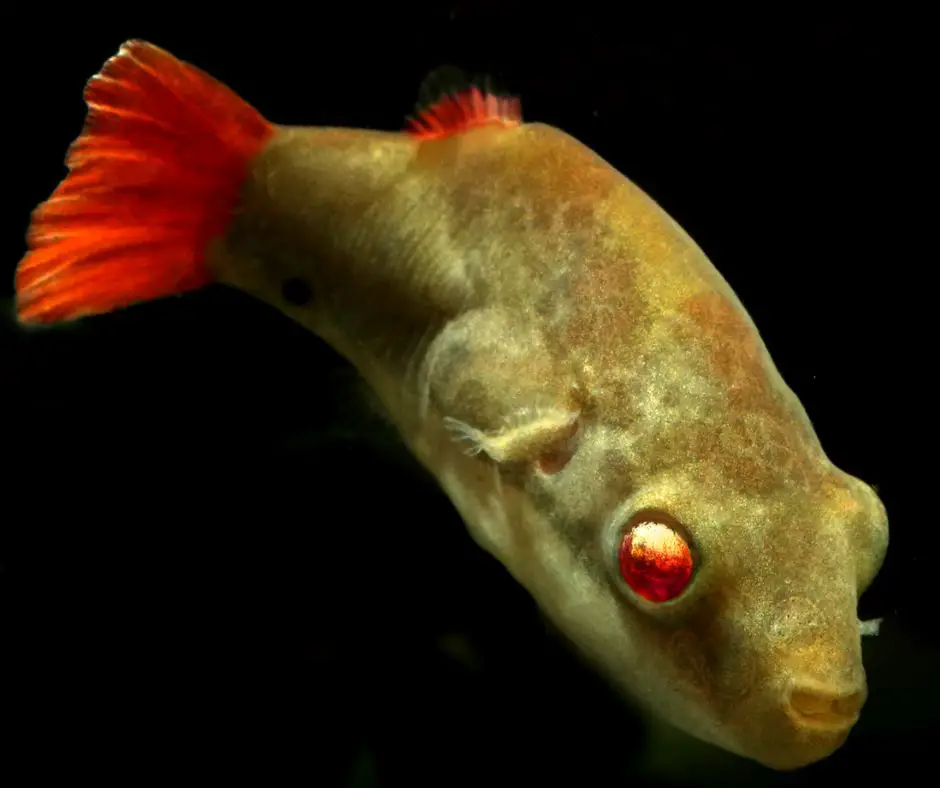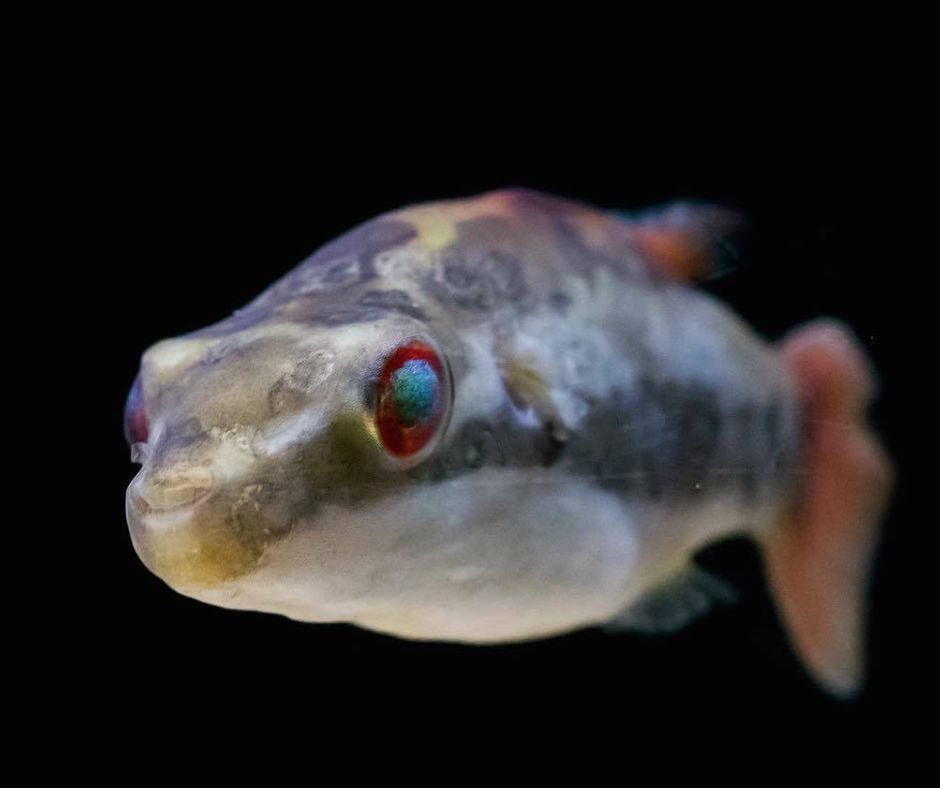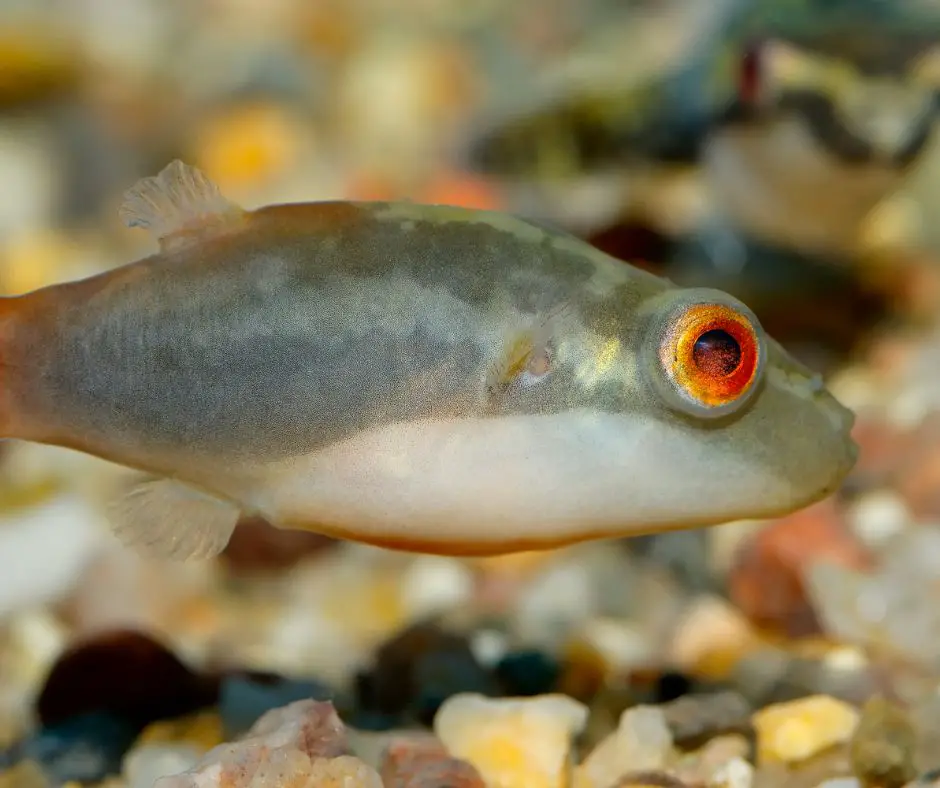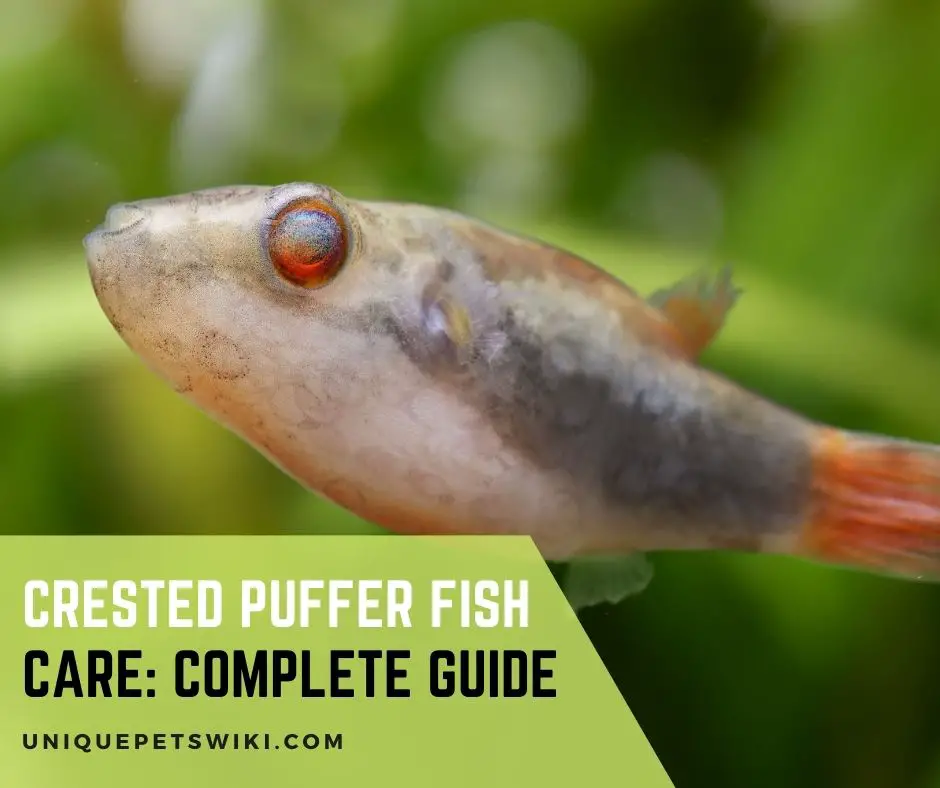Crested puffer fish is a rare species in the wild. Because of this, taking care of it can be even more challenging. Like most pufferfish, extra care should be provided for a crested puffer fish.
Are you planning on taking care of a crested puffer fish? Well, your search is over as you’ve just found a complete guide for crested puffer fish care.
We’ll give you all you need to know about crested puffer fish, and by the end of this article, you’re more than ready to take care of a crested puffer fish.
We’ll tell you how to set up the puffer’s tank and some info about tankmates and breeding.
Contents
Are Crested Puffer Fish Hard to Take Care Of?
Yes, the crested puffer fish or the Carinotetraodon Lorteti is hard to take care of. Any puffer requires an extra amount of care than other fishes.
Also, taking care of a puffer fish, especially the crested puffer, is not for beginners. You will need to have some experience taking care of fish as puffer fish is an exotic pet.
Pufferfish, such as the crested puffer, need a large tank to minimize the chances of being spooked or stressed.
These puffers also make a lot of mess, so you will need to change the water frequently as they are sensitive to the water parameters. Adding a filtration system is recommended and beneficial.

Crested Puffer Fish Care: Complete Guide
The Carinotetraodon Lorteti, more commonly known as crested puffer, is a difficult fish to take care of. It requires a big tank; preferably, only one crested pufferfish should be kept in a tank.
Its diet should be close to what the puffer eats in the wild. The crested puffer’s breeding style includes a distinct mating dance which is the same in captivity and in the wild.
| Species Profile – Crested Puffer Fish | |
| Scientific Name | Carinotetraodon lorteti |
| Common Names | Redeye Puffer, Somphong’s Puffer |
| Origin | Southeast Asia such as Thailand, Cambodia, Vietnam |
| Adult Size | 2 – 3 inches (5 – 7.6cm), 3.3 pounds. |
| Lifespan | 5+ years |
| Tank Size | 15+ gallons |
| Temperament | Aggressive |
| Diet | Carnivorous |
| Breeding Method | Egg layer |
| Care Level | Medium |
Tank Setup
The red-eye puffer or the crested puffer is a rare species in the wild. They originated in Southeast Asia, so they are warm-water species.
The recommended temperature is around 24°C-28°C or 75°F- 82°F. In particular, owners need to pay attention to safe water parameters for crested puffer:
- Ideal pH: 6.0 – 7.5
- Ammonia: 0ppm
- Nitrite: 0ppm
- Nitrate: <10ppm
- Hardness: 18 – 215 ppm
The red-eye puffer grows up to 2-3 inches and requires a minimum of a 10-gallon tank. Of course, it is always better to have a bigger tank for the puffer.
If you are keeping a pair for breeding, you need a tank of at least 20 gallons.
Red-eye puffers can be found in freshwater rivers and ponds, so fresh water should be used in their tanks.
They reside in slow-moving waters, so it is best to imitate that and try to keep your tank from flows or currents that filters might give out.
If your current filter causes strong currents or flow, you should change it. Your tank should be filled with live plants or moss, such as Java moss is recommended.
These plants will block out the light and offer a hiding place for your puffer to keep it from being spooked.
The lighting in the tank should not be too bright as this will likely stress out the puffer; dim lighting is the best choice. If you have live plants in the tank, the light should only be enough for the plants to grow.
API FRESHWATER MASTER TEST KIT 800-Test
- Contains one (1) API FRESHWATER MASTER TEST KIT 800-Test Freshwater Aquarium Water Master Test Kit, including 7 bottles of testing solutions, 1 color card and 4 glass tubes with cap
- Helps monitor water quality and prevent invisible water problems that can be harmful to fish and cause fish loss
- Accurately monitors 5 most vital water parameters levels in freshwater aquariums: pH, high range pH, ammonia, nitrite, nitrate
- Designed for use in freshwater aquariums only
- Use for weekly monitoring and when water or fish problems appear
Last update on 2022-12-30 / Affiliate links / Images from Amazon Product Advertising API
Tank Mates
The crested pufferfish are aggressive creatures. They are best to be kept alone as they might hunt down other creatures you will put in the tank, including fellow crested puffers.
You should not put two male crested puffers together as it will result in high aggression.
However, if you decide to put some tankmates for your crested puffer, a 10-gallon tank might not be enough, and you should consider getting a bigger tank and ensure the tank mates are fast swimmers.
You could try adding invertebrates, but there’s no guarantee they will not get eaten.
Diet for Crested Puffer Fish
The crested puffer fish are carnivorous. In the wild, their diet consists of insects, mollusks, and crustaceans such as snails, scallops, clams, crabs, and shrimp.
You can feed your pet frozen or live foods, but your puffer prefers live food. You can give them worms, larvae, or shrimp which are widely available in pet stores.
Like other puffer species, the crested puffer needs to bite down hard shells, so it is necessary to give them mollusks or crustaceans to keep their teeth in good condition.
The crested puffer will most likely not eat dry foods such as pellets or flakes, so avoid feeding them dry foods as it will only make a mess in their tank.
Breeding

In contrast to other puffers where both male and female look alike, you can quickly know which is a male or female crested puffer.
You can differentiate a male and female crested puffer fish by their dorsal and ventral keel. The male crested puffer is also larger than the female crested puffer.
Aside from this, male crested puffers have a more solid color, while female puffers have markings or patterns on their skin.
Their reproduction in captivity is not that different from how they reproduce in the wild. Although, several factors were facilitated by the owners, such as the water parameters or temperature.
However, it can be challenging to breed crested pufferfish in captivity as the male and female puffer should be compatible with spawning.
This process will also require a large tank enough for the male and female crested puffers.
The tank should be full of vegetation to lessen the aggressiveness between the two puffers. Increasing the temperature to 28°C or 82°F also increases the success rate of the breeding.
The male and female crested puffers should be both adults or at least a year old. It takes a year or two before crested puffers reach full maturity.
The male crested pufferfish initiates the breeding. It displays its fins and colors and dances around the female crested fish as a mating or courtship dance.
Once they are done, the female crested fish will lay its eggs on the plants in your tank, which can lay up to 350 eggs.
Afterwards, the male will scare off the female. The male crested fish will take care of the eggs until they hatch.
However, once the eggs hatch, the parents will eat the newborn. So, it is best to remove the parents once the eggs hatch.
Common Crested Puffer Diseases

Like other fish or puffers, a crested puffer fish will also get diseases from the water condition and food. Ensuring that the water quality is in its best state is one way to prevent or minimize the occurrence of these diseases.
One of the common diseases is fin rot, which occurs when several crested puffer fish are put together in one enclosure. It is common in fish stores. So check the fish for fin rot before buying the crested puffer fish.
Another common disease of a crested puffer fish is ich or white spot. These are caused by stress and poor water conditions.
So make sure that the tank is full of plants and decorations and also ensure that the water is clean by adding filters and cleaning or changing the water frequently.
Removing food residue is also essential for the health of your pet.
Another problem is parasites such as tapeworms. Your pet can get these in the food they eat, typically in mollusks and crustaceans.
This is a more severe condition as it could eventually starve you crested puffer fish, leading to death.
This requires immediate attention and medication. You can use a dewormer to treat your crested pufferfish. This is not only done once, but you should continue it until you are sure that your pet is safe.
How Much Do Crested Puffers Cost?
If you want to take care of a crested puffer fish, you have to prepare for the challenge and the cost. Taking care of this creature could be pretty expensive.
Let’s start with the puffer, the prices vary on availability and other factors, and we’re not including the delivery fee yet. A crested puffer fish could range from $10 to $30.
Of course, you’ll need a tank and filter and decorations such as live plants. The crested puffer also needs mollusks and crustaceans in its diet, so their food can also be expensive.
Wrapping Up
To wrap it up, taking care of a crested puffer fish, just like any puffer fish, is a demanding task.
However, a crested puffer fish is a sensitive fish that may not be suitable for beginners as it will need more care and attention than usual fish.
Not only is it challenging, but it is also quite expensive. Maintaining the cleanliness of the tank is essential for the puffer’s health.
That’s why a filtration system is necessary, as well as changing the water frequently.
Crested puffer fish are also not as friendly and are better off when they are alone. Just ensure they have adequate space and lots of plants to hide in, and they will surely be happy.

